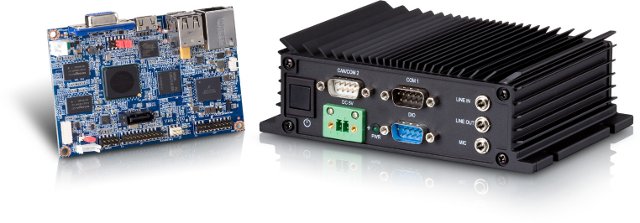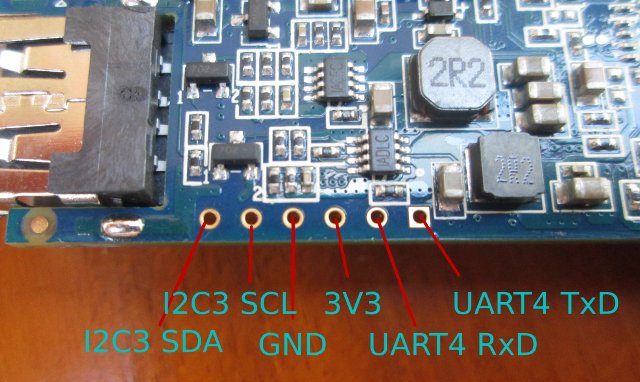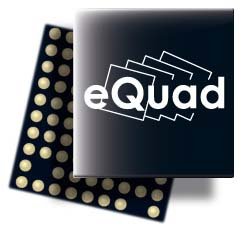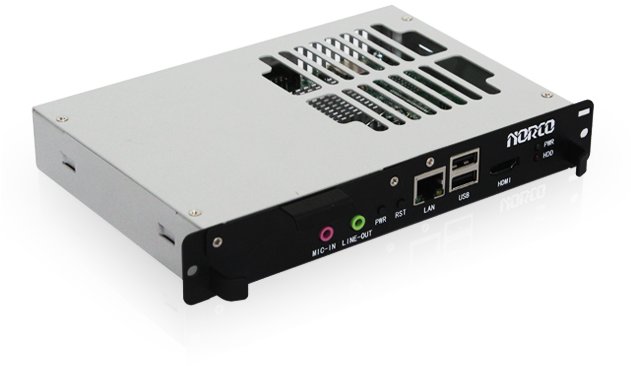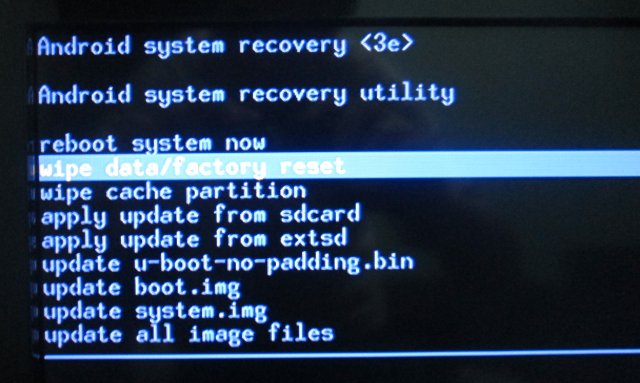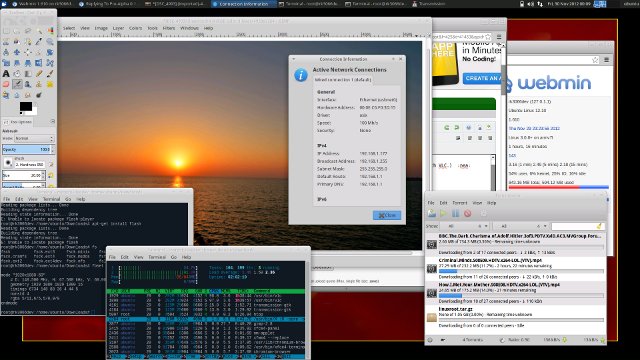The Embedded Linux Conference (ELC 2013) will take place on February 20 – 22, 2013 at Park 55 Hotel in San Francisco, California. ELC consists of 3 days of presentations, tutorials and sessions. There will be over 50 sessions during those 3 days. I’ll highlight a few sessions that I find particularly interesting, and that did not get presented at ELCE 2012 (AFAICR). February 20 11:00 – Anatomy of the arm-soc git tree by Olof Johansson, Google We are now two years into the new maintainer model for ARM platforms, and we have settled down into a workflow that maintainers have adjusted well to. Still, when new platforms arrive, or when maintainer ship changes hands, there’s sometimes a bit of ramp-up in getting used to how we organize our git tree and how we prefer to see code submitted to fit that model. This presentation will give an overview of […]
VIA ARMOS-800 Embedded System Features a Freescale i.MX537 based Pico-ITX Board
VIA Technologies has recently announced the VIA ARMOS-800, an fanless system designed around VIA VAB-800 Pico-ITX board powered by Freescale i.MX537 processor. The VIA ARMOS-800 provides a ruggedized low-power system for industrial and in-vehicle applications such as a digital signage. Here are VIA ARMOS-800 specifications: Processor – 800MHz Freescale Cortex-A8 single core i.MX537 System Memory – 1GB DDR3-800 SDRAM using 128M x16 memory devices Storage – 4GB onboard eMMC Flash memory + ob-board micro SD connector Graphics – Supports two integrated graphics processing units: an OpenGL ES 2.0 3D graphics accelerator and an OpenVGTM 1.1 2D graphics accelerator Video Output – VGA and HDMI Audio I/O – Line-In, Line-out, Mic-in connectors Connectivity: Ethernet – 10/100 PHY transceiver (SMSC LAN8720A) Wi-Fi – Optional VIA 802.11n Wireless module VNT 9271 USB – 3x USB connectors + 1x on-board USB 2.0 pin header COM – 1x D-Sub 9-pin female connector CAN – […]
How to Access the Serial Console in HI802 / GK802 mini PC
One of the advantage of HiAPad Hi802 (aka Zealz GK802) is that it provides access to UART and I2C pins via through holes on the board. UART4 Tx and Rx pins give you access to the serial console which is a must for bootloader (U-boot), and kernel development or for debugging. The first thing is the open the casing and locate the debug pins on the board. The very best way is probably to solder a pin header, but since I don’t have header, nor soldering iron, I’ve done it the “MacGyver” way with 3 wires connected to TxD, RxD and GND, and some sticky tape. You can now insert the other side of the wires into your USB to TLL debug board (GND <-> GND, Tx <-> Rx, and Rx <-> Tx), and connect it to your Windows or Linux PC. The serial board should be recognized as a […]
ST Ericsson Demonstrates NovaThor L8580 Multi Cortex A9 SoC @ 2.8 GHz
We’ve first heard about ST Ericsson NovaThor L8580 in July 2012, and the company demonstrated their new processor at CES 2013. This SoC features 4 (or is it 2?) Cortex A9 cores, and a PowerVR SGX544 GPU, but the real advantage of this processor is the new process technology called FD-SOI (Fully Depleted Silicon On Insulator) which, combined with some other power and performance optimization techniques, allows some fun stuffs such as: 2.8 GHz dual core operation 1 GHz operation at 0.63V instead of 1.1V when using bulk CMOS technology. You can see those 2 use cases in the video demo. In the first demo, a phone prototype based on L8580 @ 2.8Ghz is clearly faster than the Samsung Galaxy S3 based on Exynos 4412, and the second demo shows power measurement of the prototype when ran at 1GHz. Other key features of L8580: Low-power eQuad processor clocked at up […]
Norco BIS-6332A Freescale i.MX6 OPS Compliant Digital Signage Platform
Norco recently unveiled a BIS-6332A, a platform based on Freescale i.MX6 processor compliant with Intel’s Open Pluggable Specification (OPS) mainly to be used as a digital signage player, but also as a fanless Box PC, a media player, a point of sale and more. The open pluggable specification (OPS) defines mechanical and electrical characteristics so that you can easily replace a OPS compliant board or device with another compliant platform. Here are the specifications of the device: SoC – Freescale Cortex-A9 i.MX 6 series (Single-core/dual-core/ Quad Core CPUs) System Memory – Onboard 1GB/2GB DDR3 800MHz RAM Storage: 1xMicro SD 4GB/8GB iNAND flash 1x SATAII for 2.5″ HDD or SSD Video Output – 1x HDMI (front panel), 1x HDMI ( extended by OPS slot) and LVDS Connectivity: 10/100/1000Mbps LAN (Atheros AR8033) On-board USB WIFI 3G (optional) USB – 2x USB on front panel, 3x USB provided via OPS slot, one 2x5Pin USB […]
GeekBuying Releases Firmware 1.65.4 for GK802 mini PC
Geekbuying has released a new version of the firmware (1.65.4) for Zealz GK802 mini PC that fixes NTFS and Bluetooth issues, but you may instead want to use deadhp1 version which also provides root access, and fixes “this item is not compatible with your device” issue in Google Play. There are 2 files available (Deaphp1): rooted_fixed_rt-M500a_v1.65.4_20130118a_updated.7z (link down) – Firmware Update 1.65.4 (127 MB) rooted_fixed_rt-M500a_v1.65.4_20130118a_updated_FULL_IMAGE.rar (link down) – The full SD card with 1.65.4 (747 MB) Normally, you would just use the firmware update file that contains the system, boot, u-boot and recovery partition (in this release) by following those steps in a Linux or Windows PC [Update: this method does not appear to work for anybody, please scroll down to use dd / Win32DiskImager method]: Extract rooted_fixed_rt-M500a_v1.65.4_20130118a_updated.7z Copy the files to a microSD card Insert the microSD card into GK802 microSD slot. Insert the microUSB cable halfway in GK802 […]
PicUntu – Rockchip RK3066 Linux Distribution for mini PCs (UG802, MK808, …)
Many people are using RK3066 mini PCs because they currently offer the best performance to cost ratio, but until now they were mainly limited to Android Jelly Bean, although there was some preliminary port of Ubuntu available for the devices. Now, this preliminary port has become a specific Linux distribution for Rockchip RK3066 PCs-on-a-stick called PicUntu, which is based on Ubuntu 12.10, and can optionally support Xfce or Gnome desktop environments. This distribution is known to work on UG802 and MK808, but should also work on some other RK3066 mini PCs such as iMito MX1. The latest version is Picuntu 0.9 RC 2.2, and features such as WiFi, Ethernet, HDMI audio, USB webcam are known to work, What you won’t get, however, is hardware video decoding and GPU support since Rockchip does not provide the relevant binary files for Linux, but this does not seem to stop the developers from […]
GPUs Comparison: ARM Mali vs Vivante GCxxx vs PowerVR SGX vs Nvidia Geforce ULP
I’m always very confused when it comes to comparing GPUs in different SoCs, and I could not really find comparisons on the web, so I’m going to give it a try even though, as you’re going to find out, it’s actually quite a challenge. There are mainly 4 companies that provide GPUs: ARM, Imagination Technologies, Vivante and Nvidia. [Update: Two comments mentioned Qualcomm Adreno and Broadcom VideoCore are missing from the list. Maybe I’ll do an update later]. Each company offers many different versions and flavors of their GPU as summarized below. ARM Imagination Technologies Vivante Nvidia Mali-400 Series: Mali-400 MP Mali-450 MP Mali-600 Series Mali-T604 Mali-T624 Mali-T628 Mali-T658 Mali-T678 PowerVR SGX Series 5: SGX520 SGX530 SGX531 SGX535 SGX540 SGX545 PowerVR SGX Series 5XT: SGX543MP1-16 SGX544MP1-16 SGX554MP1-16 PowerVR SGX Series 6: G6200 G6230 G6400 G6430 G6600 2D graphics: GC300 GC350 3D graphics: GC400 GC800 GC1000 GC2000 GC4000 ULP GeForce (Tegra […]



